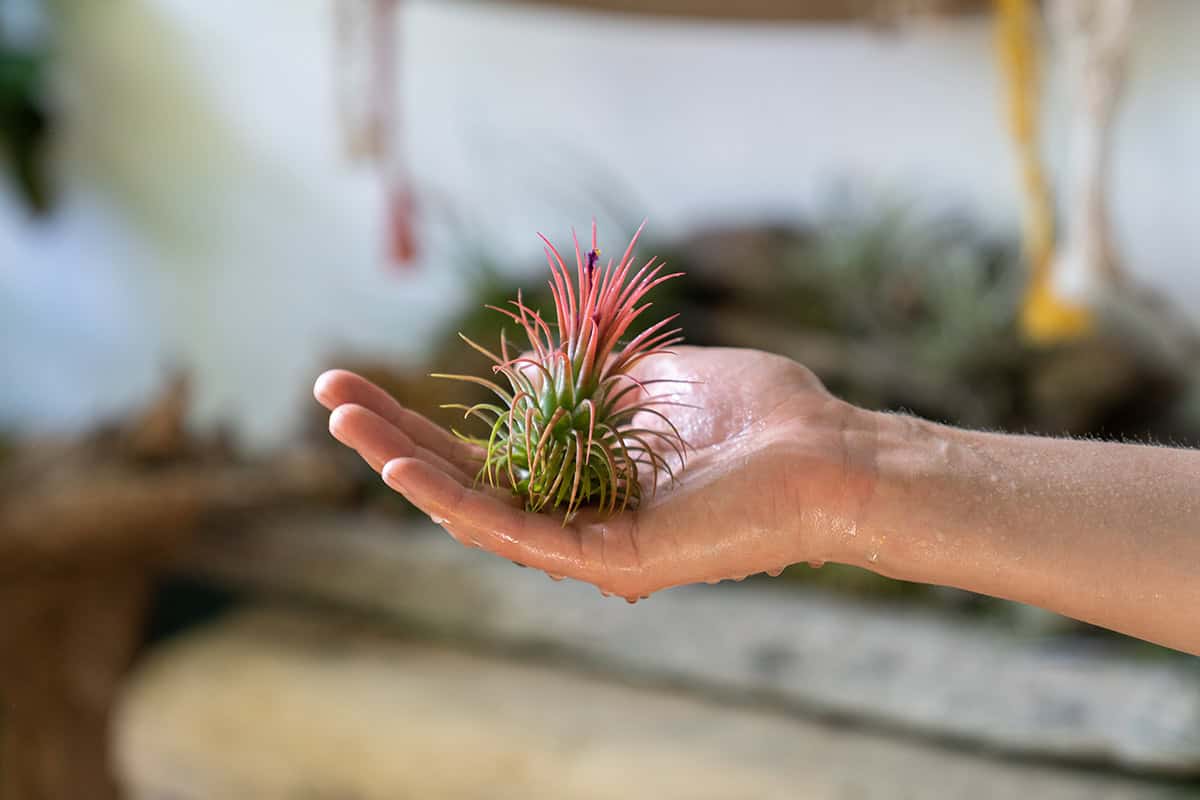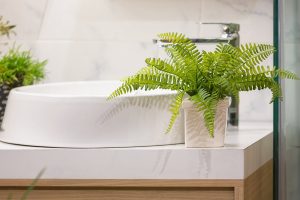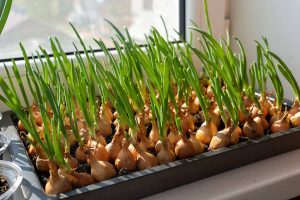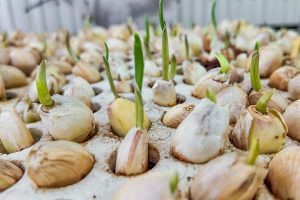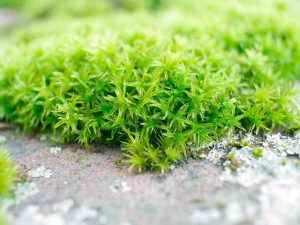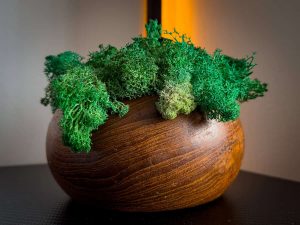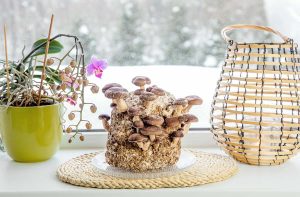You notice your once-vibrant air plant looking dry and lifeless on your shelf, its leaves curling and browning at the tips. Reviving a sick air plant can seem daunting, but with the right steps, you can bring it back to health. Discover effective techniques to rejuvenate your air plant, ensuring it returns to its former glory and continues to beautify your space.
Table of Contents
Early Signs of Air Plant Distress
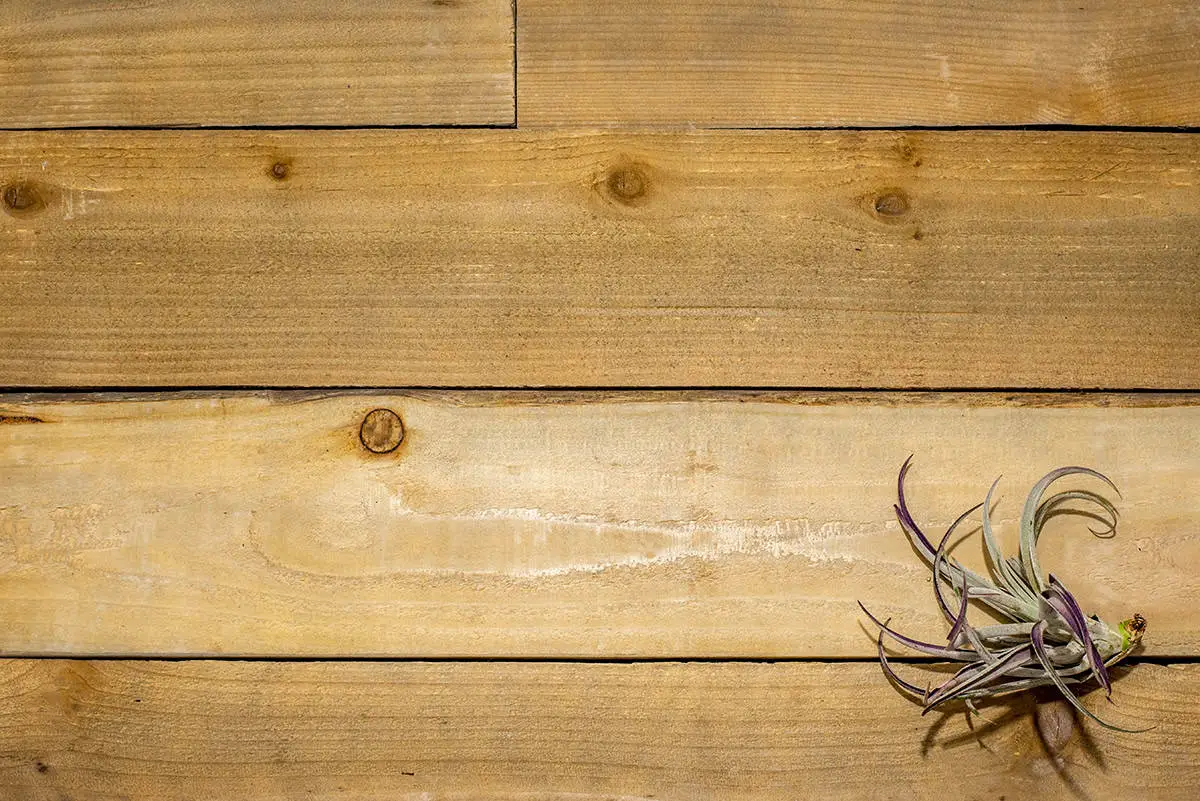
Identifying the early signs of air plant distress can be crucial in ensuring their recovery. Key indicators include changes in color, leaf deformation, and issues with the roots.
Discoloration
Discoloration in air plants often signals stress. Healthy air plants typically exhibit a vibrant green or silvery hue. When stressed, colors may fade to yellow, brown, or red tones. Yellowing often indicates overwatering. Brown tips suggest dehydration and sunburn. Red or purple discoloration can appear due to extreme light or temperature stress.
Pay close attention to the uniformity of the color change. Spotty or patchy discoloration might also indicate pests or disease.
Leaf Shrinkage
Leaf shrinkage is another sign of distress. Air plant leaves should feel firm and plump. If they start to curl or appear shriveled, it’s likely due to dehydration. Make sure the plant receives adequate misting and occasional soaking. Fatigue from inadequate light can also cause leaf shrinkage.
Furthermore, leaves that are too dry may become brittle and prone to breaking. Consistently monitor the integrity of the leaves to catch this sign early.
Root Damage
Though air plants do not rely heavily on roots for nutrients, root health is still vital. Observe the roots for signs of blackening or rotting, which often indicate overwatering or poor air circulation. Healthy roots should look white or light brown and be firm to the touch.
If roots seem unhealthy, improve airflow and reduce watering intervals. Damaged roots can also hinder the plant’s ability to anchor itself, making it susceptible to falling or damage.
Optimal Growing Conditions
Air plants need specific conditions to thrive. Key factors include proper light, temperature control, and adequate humidity levels.
Light Requirements
Air plants require bright, indirect light to grow well. Direct sunlight can burn the leaves. Place your air plant near a window that gets filtered sunlight. Fluorescent lights can also be used if natural light isn’t available. Avoid dark places as insufficient light can hinder growth and health.
It’s important to rotate the plant every week. This ensures all sides receive light evenly. If you notice the leaves turning brown, it may be getting too much direct light. Adjust its location accordingly to avoid damage.
Temperature and Air Circulation
Ideal temperatures range from 50°F to 90°F. Avoid environments that are too cold or too hot. These extremes can stress the plant. A stable temperature will keep your plant healthy.
Good air circulation is also crucial. Without it, your plant can develop mold and rot. Place your air plant in areas where air flows freely. A room with a fan or an open window can provide the needed air movement.
Humidity Needs
Air plants thrive in humid conditions. They naturally absorb moisture from the air. Aim for a humidity level between 50% and 70%. In dry environments, you may need to mist your plant regularly. Use room temperature water to spray lightly on the leaves.
Submerge the air plant in water for a few hours every two weeks. This soaking method will help maintain adequate moisture levels. Make sure to shake off excess water to prevent rot. Dry the plant upside down to ensure water drains properly from the leaves.
Revival Techniques
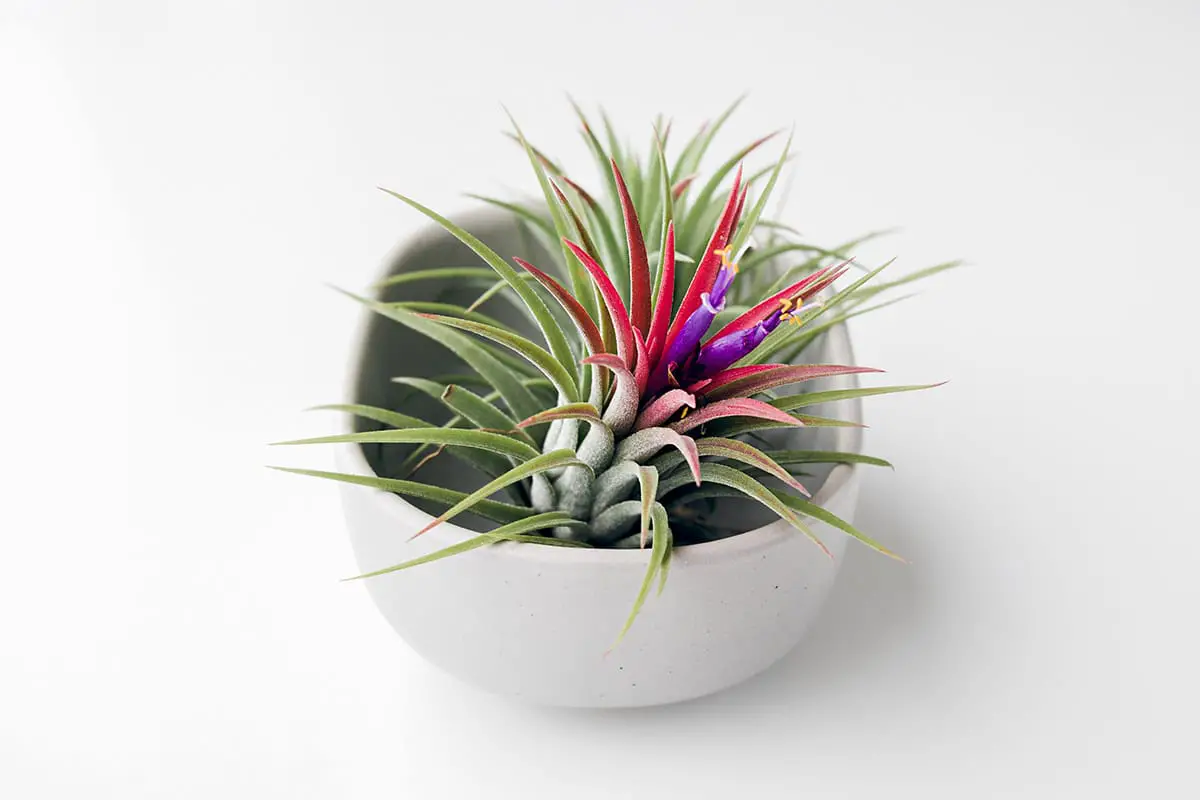
Reviving a sick air plant involves proper watering methods, trimming dead parts, and strategic fertilization. Each technique plays a vital role in ensuring the plant returns to health.
Proper Watering
Watering air plants correctly is crucial for their revival. Submerge the plant in room temperature water for 30 to 60 minutes. After soaking, shake off excess water to prevent pooling in the leaves. Place the plant upside down on a towel to dry for 30 minutes to 3 hours. Good air circulation helps the plant dry faster, preventing rot and disease. Make sure to return the plant to its display location only when it is completely dry.
Trimming and Pruning
Trimming dead or damaged leaves can significantly aid in reviving a sick air plant. Use sterilized scissors to cut away any brown or mushy parts. Trimming not only removes unhealthy tissue but also encourages new growth. Be gentle to avoid causing additional stress to the plant. Inspect the plant regularly to ensure new issues don’t arise, and always handle the plant with care to avoid damage to healthy leaves.
Fertilizing Strategically
Fertilization can provide essential nutrients that a struggling air plant needs. Use a bromeliad or air plant-specific fertilizer diluted to one-quarter strength. Apply the fertilizer during a routine watering session, typically once a month. Avoid over-fertilizing, as this can lead to nutrient burn and further harm the plant. Consistent but moderate feeding supports recovery and promotes vibrant growth. Always follow the instructions on your fertilizer package to avoid mistakes.
Advanced Tips for Air Plant Recovery
Reviving a sick air plant requires specialized practices to ensure proper hydration and health. By optimizing watering schedules and incorporating growth stimulants, you can promote recovery and vitality in your air plants.
Specialized Watering Schedules
For sick air plants, standard watering methods might not be enough. Consider using a soaking technique. Submerge your plant in water for 4 to 6 hours once a week. Use rainwater if possible. It contains more nutrients than tap water. After soaking, shake off excess water and place the plant in a well-ventilated area to dry.
Avoid direct sunlight during this process. Excessive light can stress recovering plants. Instead, provide bright, indirect light. Monitor the moisture levels carefully. Overwatering can cause rot. Adjust the schedule if necessary by reducing soaking time or frequency. Allow your plant to dry completely between watering sessions. This prevents fungal and bacterial growth.
Utilizing Growth Stimulants
Enhance recovery by using growth stimulants. Liquid fertilizers formulated for air plants work best. Apply a diluted solution once every 2 to 3 weeks. Avoid using regular houseplant fertilizers; they are too strong. Follow the instructions carefully to prevent overfeeding.
Another option is seaweed extract. It provides essential minerals and boosts plant immunity. You can also use a vitamin B1 solution. It reduces transplant shock and promotes root development. Spray the solutions onto the plants instead of soaking them. Ensure good air circulation to allow the plants to absorb the nutrients efficiently. By using stimulants wisely, you help your air plants regain their strength and vigor.
Ongoing Care and Maintenance
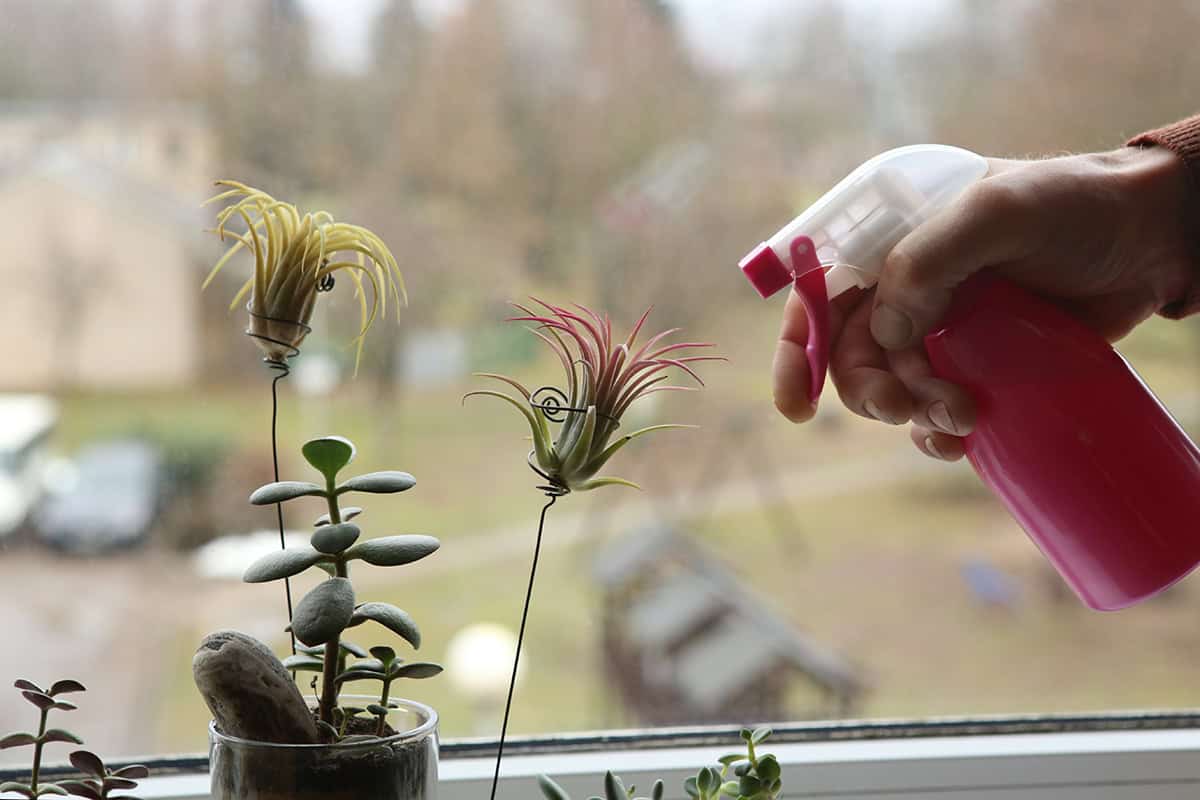
To keep your air plant healthy, maintain a regular watering routine. Soak the plant in water for 20-30 minutes every week. Then, gently shake off any excess water to prevent rot.
Ensure good air circulation. This will help the plant dry out between waterings and avoid diseases. Position your air plant near a window or use a fan if necessary.
Provide bright, indirect light. Direct sunlight can burn the leaves. If natural light is insufficient, use fluorescent lights.
Use a balanced liquid fertilizer once a month. Dilute it to half-strength. This gives your air plant the nutrients it needs.
Regularly check for pests. Mealybugs and spider mites can harm your plant. Remove pests with a gentle spray of water or an insecticidal soap.
Trim dead or damaged leaves. This encourages new growth and keeps your plant healthy. Use clean, sharp scissors for pruning.
Dust can hinder your plant’s ability to photosynthesize. So, occasionally rinse it under lukewarm water to keep it clean.
Proper humidity is key. Air plants thrive in humid environments. If you live in a dry climate, mist your plant lightly every couple of days.
Monitor your plant for signs of stress. Browning tips, shrinking leaves, or discoloration can indicate problems. Adjust care routines as needed to address these issues.
